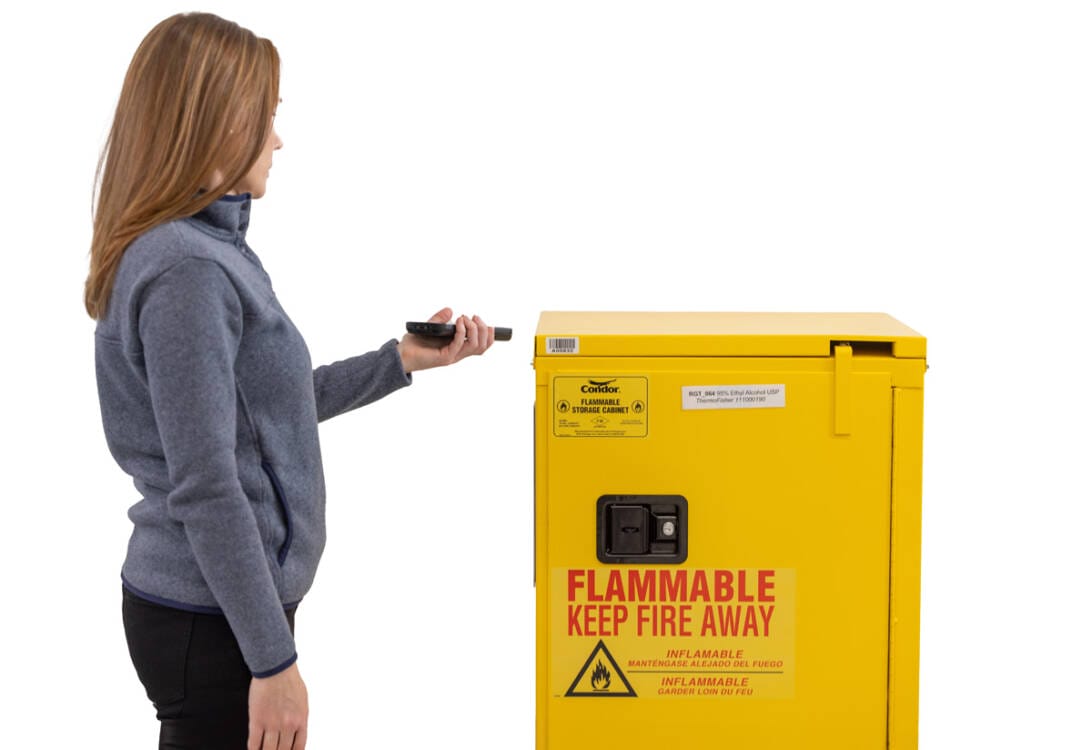The Importance of Flammable Cabinet Inspections
Ensuring workplace safety is a top priority for organizations, particularly when dealing with hazardous materials. Flammable cabinets play a crucial role in safeguarding against potential risks, and regular flammable cabinet inspections are essential to maintain their integrity. With the advancement of technology, flammable cabinet inspection software has emerged as a powerful tool to streamline and enhance the flammable cabinet inspection process. In this post, we’ll explore the top features and benefits of the best flammable cabinet inspection software available today.
First, let’s explore the details of how to properly perform a flammable cabinet inspection.
What is a Flammable Cabinet?
A flammable storage cabinet is a specialized piece of equipment designed to safely store and organize flammable liquids and materials in work environments where fire hazards are present. These cabinets are constructed with fire-resistant materials to mitigate the risk of ignition and contain potential fires within the cabinet, providing a crucial layer of protection for both personnel and property. Equipped with features such as double-walled construction, flame arresters, and leak-proof sills, these cabinets adhere to strict safety standards outlined by organizations like OSHA and NFPA.
The primary purpose of a flammable storage cabinet is to prevent the accidental ignition of volatile substances, reduce the spread of fires, and facilitate a controlled environment for the storage of flammable materials in laboratories, industrial facilities, and other workplaces where such substances are essential for operations. Proper use and regular inspections of these cabinets are fundamental elements of a comprehensive safety strategy, ensuring a secure workplace and compliance with regulatory requirements.
Table of Contents

What Types of Materials are Stored in a Flammable Cabinet?
There are several types of materials and liquids that need to be stored in a flammable cabinets.
Flammable Liquids:
- Flammable liquids are perhaps the most common materials stored in flammable cabinets. This category includes substances such as solvents, paints, thinners, and fuel oils. The cabinets are designed to prevent the ignition of vapors and control the spread of fire in the event of a spill or leakage.
Aerosols:
- Aerosol cans, often containing highly flammable propellants, are stored in flammable cabinets to prevent them from becoming potential sources of ignition or explosion.
Chemicals and Reagents:
- Laboratories dealing with flammable chemicals and reagents, such as ethanol, acetone, or methanol, rely on flammable cabinets to minimize the risks associated with these volatile substances.
Combustible Materials:
- Certain combustible materials, though not strictly flammable, may still pose fire risks. Storing these materials in flammable cabinets adds an extra layer of protection against accidental ignition.
Why Do I Need to Perform Flammable Cabinet Inspections?
First of all, both OSHA and NFPA offer standards for compliance with the storage, handling, and use of flammable and combustible liquids. The National Fire Protection Association published their standard as NFPA 30, Flammable and Combustible Liquids Code. OSHA’s standard 1926.152 – Flammable Liquids states, “Quantities of flammable liquid in excess of 25 gallons shall be stored in an acceptable or approved cabinet…” These standards are in place to prevent fires and protect the safety of workers. Additionally, NFPA 30 is enforceable under building and fire prevention codes in the following states: AL, AZ, AK, CA, CO, CN, FL, HI, IA, IL, IN, KS, KY, MA, ME, MI, MN, MO, MT, ND, NE, NJ, NM, NV, OH, OR, RI, TX, UT, VA, VT and WI. It is also enforceable in several local jurisdictions. Other avenues of enforcement may include Occupational Safety and Health Administration (OSHA) regulations.
Performing flammable cabinet inspections is not just a regulatory requirement but a critical piece of an overall workplace fire prevention program. Flammable materials pose inherent risks, and a well-maintained storage cabinet which meets regulatory requirements serves as a primary line of defense against potential disasters. Regular flammable cabinet inspections are imperative to identify any signs of wear, damage, or malfunction that could compromise the flammable cabinet’s integrity. Ensuring proper sealing, intact door latches, and ventilation functionality are crucial aspects of flammable cabinet inspections. By conducting routine flammable cabinet inspections, you mitigate the risk of leaks, spills, or containment breaches, reducing the likelihood of fires and chemical accidents.
Compliance with safety regulations, such as those set by OSHA and NFPA, is non-negotiable, and flammable cabinet inspections provide the documentation necessary to prove compliance with these standards. Additionally, a well-maintained flammable storage cabinet not only safeguards the well-being of workers but also protects valuable assets and prevents potential environmental hazards. Ultimately, regular flammable cabinet inspections are a proactive measure, contributing to a culture of safety and minimizing the potential impact of flammable materials in the workplace.
Flammable storage cabinet inspections are a crucial component of workplace safety, providing a secure environment for the storage of flammable liquids and materials. Regular flammable cabinet inspections are essential to ensure each flammable cabinet’s continued effectiveness in containing fire hazards. In this comprehensive guide, we will walk you through the step-by-step process of performing flammable cabinet inspections to maintain compliance with safety standards and keep your workplace secure.
How to Perform a Flammable Cabinet Inspection
Here are the steps to take for a successful flammable cabinet inspection.
Step 1: Familiarize Yourself with Regulations and Standards
Before diving into the flammable cabinet inspection process, it’s important to be well-versed in the relevant safety regulations and standards. Familiarize yourself with guidelines such as OSHA 1926.152 – Flammable Cabinet regulations and NFPA 30, Flammable and Combustable Liquids Code, to ensure a thorough and compliant flammable cabinet inspection.
Step 2: Setup a Regular Flammable Cabinet Inspection Schedule
Establish a routine inspection schedule for flammable cabinet inspections. Depending on the nature of your workplace and local regulations, flammable cabinet inspections may be required monthly, quarterly, or annually. Consistent and scheduled flammable cabinet inspections help identify potential issues before they escalate.
Step 3: External Flammable Cabinet Inspection
Start by performing a visual flammable cabinet inspection of the exterior. Check for any signs of damage, corrosion, or wear. Ensure that the flammable cabinet is properly labeled with the appropriate safety signage, including its classification and capacity.
Step 4: Door Seals and Latches
Inspect the flammable cabinet doors and their seals. Ensure that the door seals are intact and provide a proper seal when closed. Check the latches to confirm that they are functioning correctly and that the doors can be securely closed.
Step 5: Ventilation Openings
If applicable, examine the ventilation openings of the flammable cabinet. Ensure that they are not obstructed and are functioning as designed. Proper ventilation is crucial to prevent the buildup of flammable vapors within the cabinet.
Step 6: Interior Flammable Cabinet Inspection
Open the flammable cabinet doors and conduct a thorough interior flammable cabinet inspection. Check for spillage, leaks, or any damage to the shelving. Verify that containers inside the cabinet are in good condition, properly labeled, and stored according to the cabinet’s capacity.
Step 7: Grounding Connection
If your flammable cabinet is designed to be grounded, inspect the grounding connection. Ensure that it is intact and provides a secure electrical connection to prevent static electricity buildup.
Step 8: Flammable Cabinet Inspection Documentation
Document the details of your flammable cabinet inspection, including any issues identified and corrective actions taken. Proper documentation is essential for compliance, audits, and continuous improvement.
Step 9: Flammable Cabinet Inspection Training and Awareness
Ensure that personnel responsible for performing flammable cabinet inspections are adequately trained. Promote awareness of the importance of flammable cabinet inspections and encourage a culture of safety within the workplace.
Does Software Simplify Flammable Cabinet Inspections?
We’ve established that regular flammable cabinet inspections are a vital aspect of maintaining a safe working environment, and are also required by law. But it might seem like a lot of work to manage flammable cabinet inspections without an efficient program to help. Flammable cabinet inspection software removes much of the burden from a flammable cabinet inspection program by automating much of the process. Flammable cabinet inspection software can automate scheduling, asset management, NFPA and OSHA code repositories, and reporting. This frees up time to focus on the actual flammable cabinet inspections. Let’s take a look at some of the ways flammable cabinet inspection software can help.
Real-Time Monitoring
One of the key advantages of using flammable cabinet inspection software is the ability to monitor cabinets in real-time. This feature ensures that any potential issues or deviations from safety standards are identified promptly, allowing for immediate corrective action. Flammable cabinet inspection dates and results can be viewed from a dashboard on a computer screen, rather than having to walk the facility to physically view flammable cabinets.
Digital Checklists and Customizable Forms
Say goodbye to traditional paper checklists. Flammable cabinet inspection software offers digital checklists and customizable forms, allowing inspectors to efficiently and accurately record flammable cabinet inspection data. This not only reduces the risk of human error but also provides a standardized approach to flammable cabinet inspections.
Compliance Tracking
Staying compliant with safety regulations is crucial. The best flammable cabinet inspection software includes features for tracking compliance with industry standards and regulations. Automated scheduling of flammable cabinet inspections when they are due helps organizations stay ahead of schedule and avoid penalties for non-compliance.
Documentation and Reporting
Efficient documentation and reporting are essential for maintaining a comprehensive record of flammable cabinet inspections. Flammable cabinet inspection software allows for digital storage and on-demand retrieval of inspection data, as well as the generation of detailed reports. This feature is invaluable for audits, regulatory reporting, and continuous improvement initiatives. It is much more effective than a room full of file cabinets!
Mobile Accessibility
Flammable cabinet inspectors are generally not tethered to a desk. They must go out into the facility to perform flammable cabinet inspections. The best flammable cabinet inspection software solutions offer mobile accessibility, enabling inspectors to conduct flammable cabinet inspections using smartphones or tablets. This flexibility ensures that flammable cabinet inspections can be fully completed and documented out in the field, enhancing efficiency and eliminating the reliance on physical paperwork and data entry.
Integration with Maintenance Systems
To further streamline operations, top-notch flammable cabinet inspection software integrates seamlessly with work order or CMMS systems. This integration ensures a holistic approach to safety management, allowing organizations to address any identified issues promptly through the maintenance workflow.
Investing in the best flammable cabinet inspection software is a proactive step towards enhancing workplace safety and compliance. With features like real-time monitoring, digital checklists, compliance tracking, documentation, mobile accessibility, and integration with maintenance systems, flammable cabinet inspection software solutions provide a comprehensive and efficient approach to flammable cabinet inspections. By embracing technology, organizations can not only ensure the safety of their workforce but also simplify the overall management of hazardous materials in the workplace.

